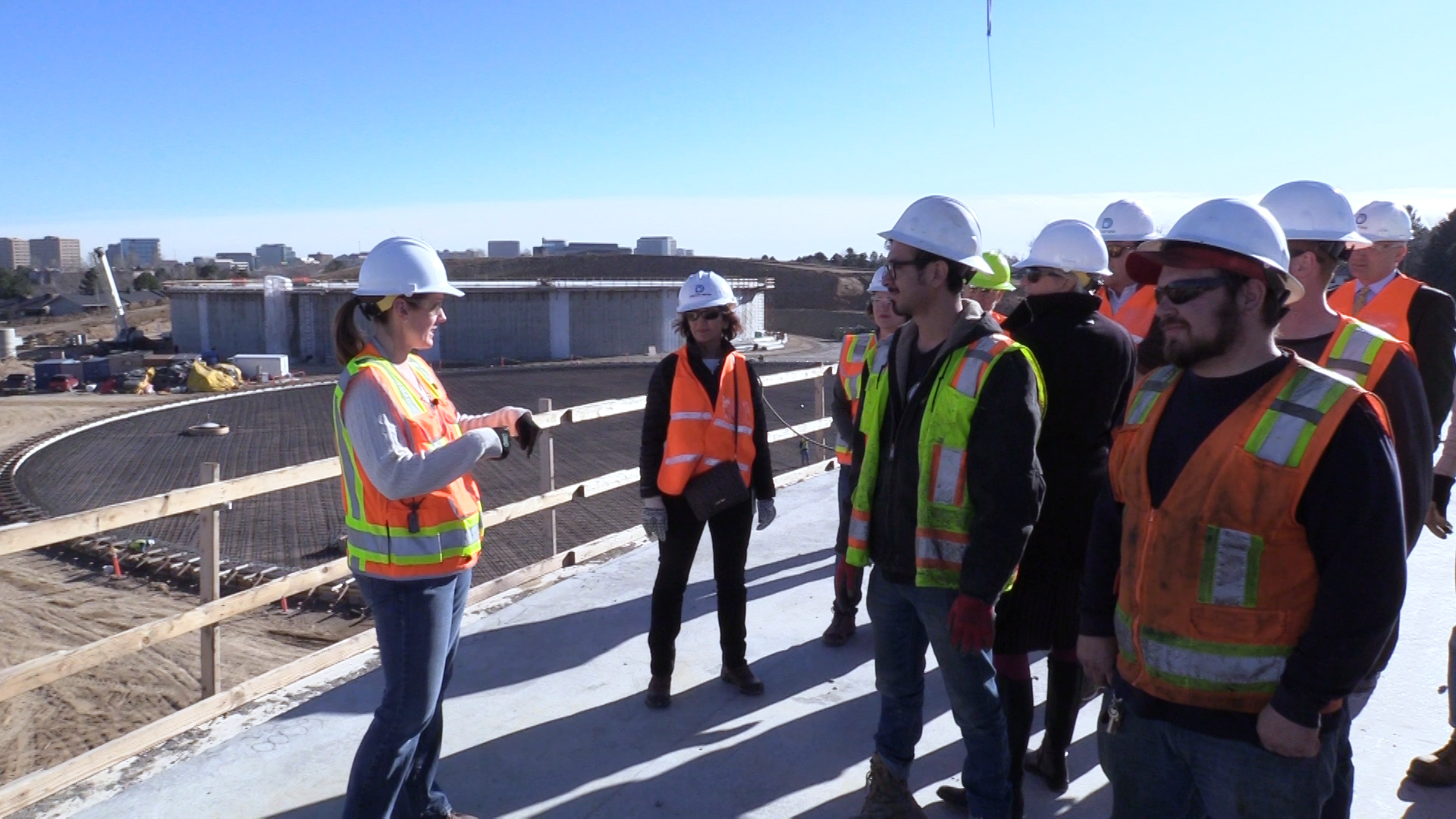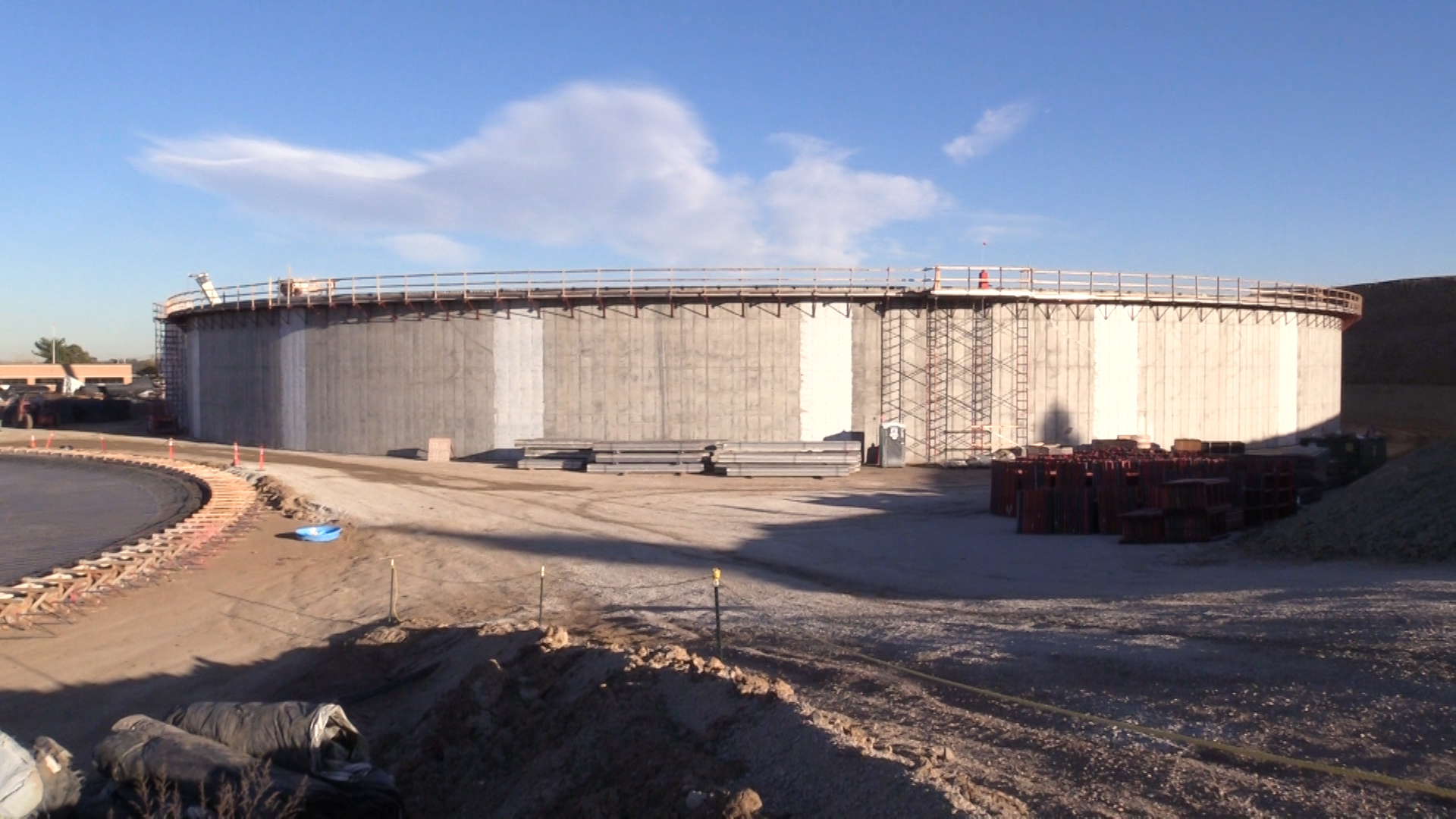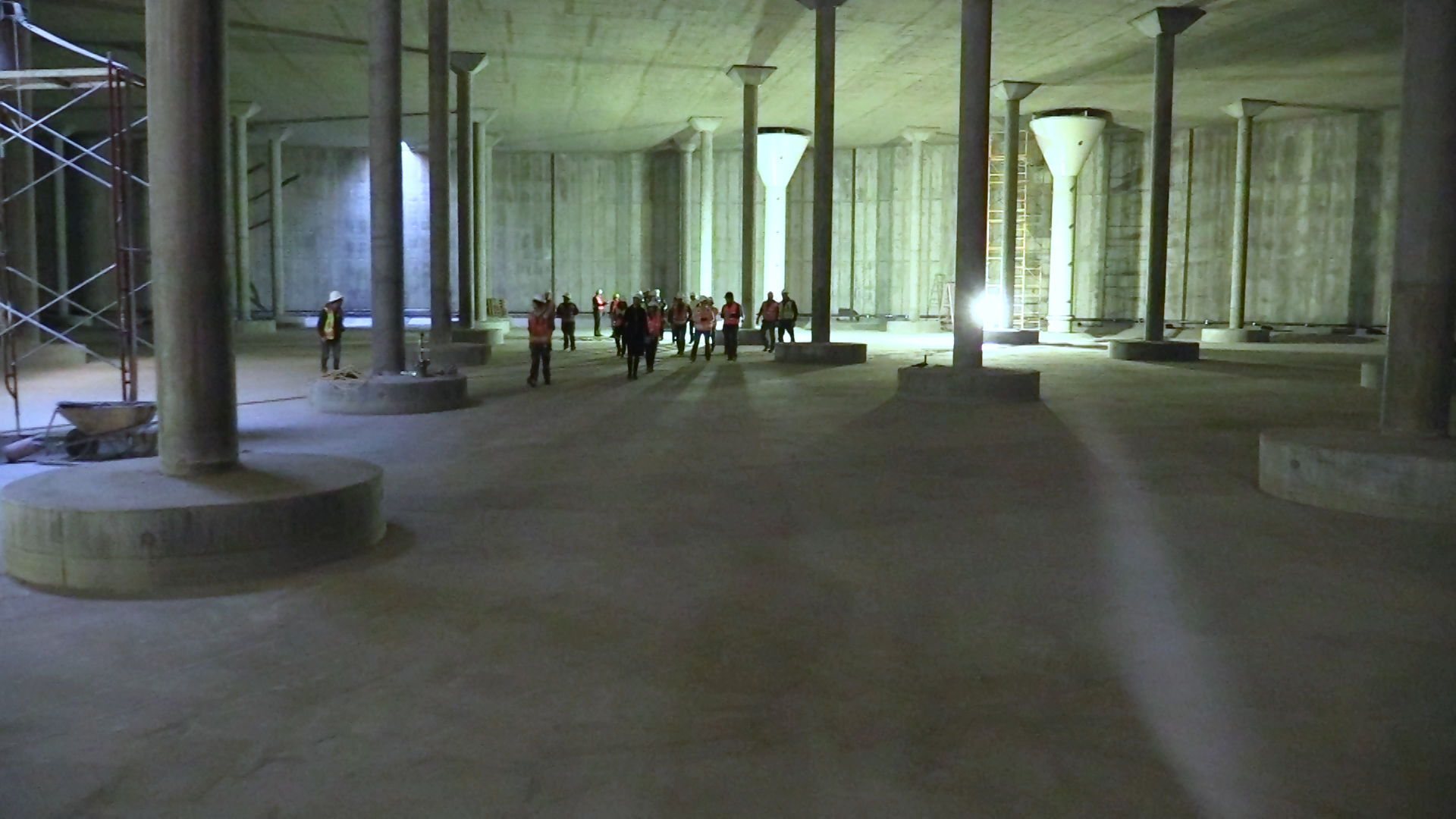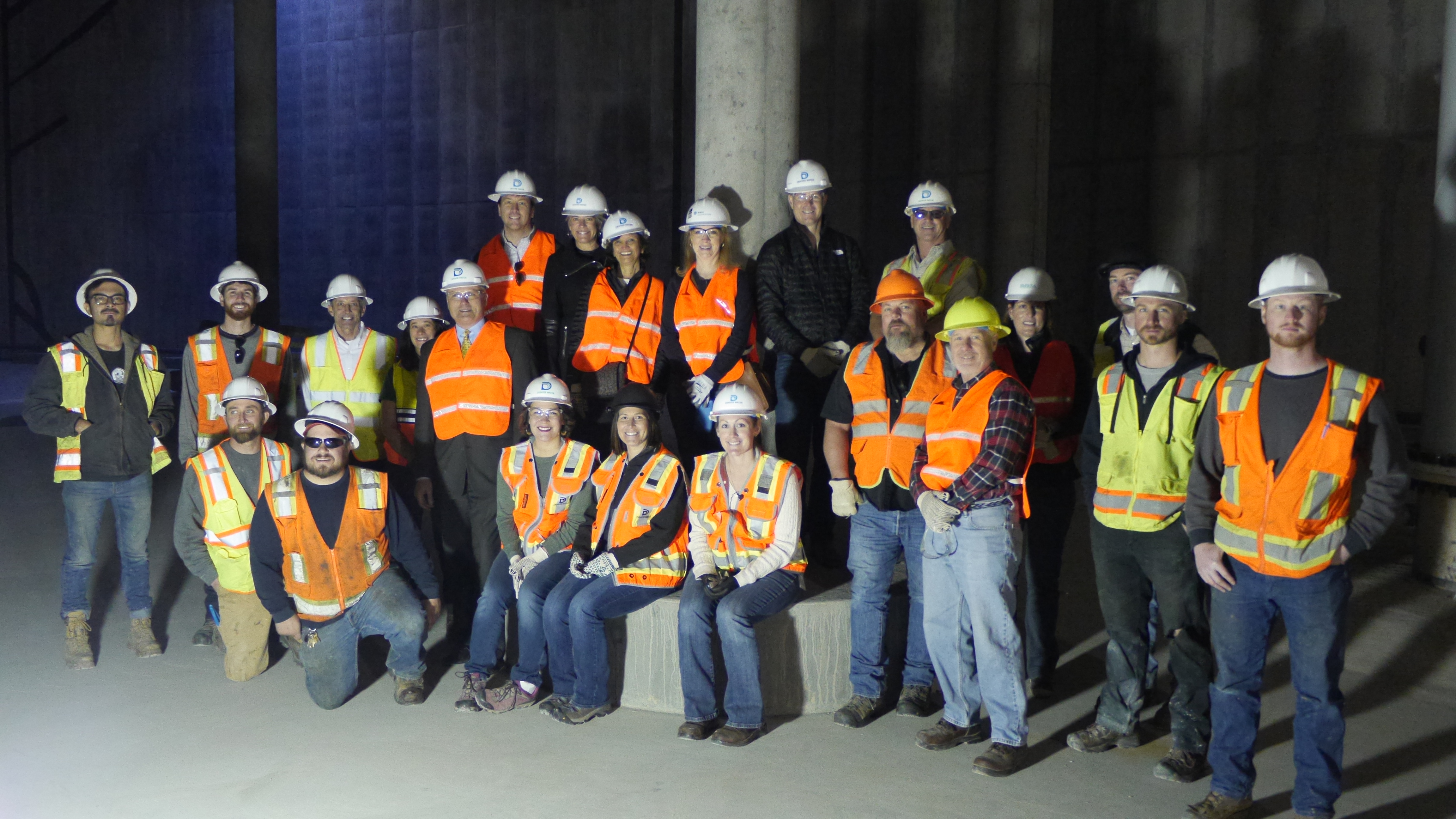
The big tank tour
The $100-million Hillcrest project in south Denver represents more than an investment in Denver Water’s infrastructure; it also helps tell the story of how the utility delivers clean drinking water to one-quarter of the state’s population.
On Nov. 30, several Denver Water distributors toured the Hillcrest site for a firsthand look at how the project would benefit their customers.
Denver Water has contracts with 65 distributor districts that provide water to roughly half of the 1.4 million people Denver Water serves. The distributors deliver water provided by Denver Water to customers outside the Denver city limits in parts of Adams, Arapahoe, Douglas and Jefferson counties. Some of the communities served include Centennial, Commerce City, Greenwood Village, Lakewood, Littleton and Wheat Ridge.
“Without our distributors and our suburban customers, we would not be able to build important water projects like the Hillcrest facility,” said Julie Seagren, distributor relations manager at Denver Water. “Customers served by our distributors make up 52 percent of Denver Water’s revenue, which helps pay for infrastructure upgrades.”
Rates from all customers are helping pay for three new 15-million-gallon treated water storage tanks and a new pump station at the Hillcrest site that will replace the two original tanks and pump station that were built in the 1960s. The project is expected to be completed in early 2020.
“Hillcrest is a major hub where we store treated drinking water for customers in Denver and people in the suburban areas we serve,” Seagren said. “We’re expanding our overall storage capacity, building tanks that are less susceptible to leaks and replacing aging pumping equipment.”
Denver Water uses large treated water storage tanks throughout its distribution system to store water from its treatment plants. That water is then pumped or delivered via gravity to people in Denver and suburban areas served by Denver Water.
Once the Hillcrest tanks are completed, there will be 31 treated water storage tanks at strategic locations throughout the metro area. The three Hillcrest tanks will store one-quarter of Denver Water’s treated water.
The additional 15 million gallons of capacity added at Hillcrest will help to ensure Denver Water continues to meet water demand during peak usage in the summer months.
The agreements with suburban distributors began in 1948 as residents outside Denver looked for water for their growing communities. Denver Water established its current distributor service area in 1994 and agreed not to go outside the boundaries as part of the 2013 Colorado River Cooperative Agreement.
“Denver Water has focused on improving relationships with its distributors in recent years to ensure customer needs outside the city are being met,” Seagren said. “We have some distributors that serve as few as four taps to one that serves nearly 16,000.”
Denver Water has three types of contracts with distributors — total service, read and bill and master meter.
Southgate Water District is a read and bill distributor that gets all of its water from Denver Water. The district serves 55,000 full-time residents along the Interstate 25 corridor south of Denver.
“Denver Water has the infrastructure to bring water down from the mountains and the treatment plants to make sure the water is safe to drink,” said Dave Irish, district manager of Southgate Water. “We provide the pipes and pumps to get their water to our customers in parts of four cities and two counties outside Denver.”
Southgate employees were among a group of distributors and business leaders who toured the Hillcrest site. The tour included a walk inside one of the 15-million-gallon storage tanks under construction.
“It’s an impressive facility, and it’s important to see how Denver Water is using our rates to improve its system,” Irish said.
Employees from Platte Canyon Water and Sanitation District — another Denver Water distributor — were also on the Hillcrest tour.
“If we don’t update aging water infrastructure, we won’t be able to support our communities in the future,” said Cynthia Lane, assistant director at Platte Canyon Water. “When it comes to water issues and solutions along the Front Range, we really are one community that has to work together.”




